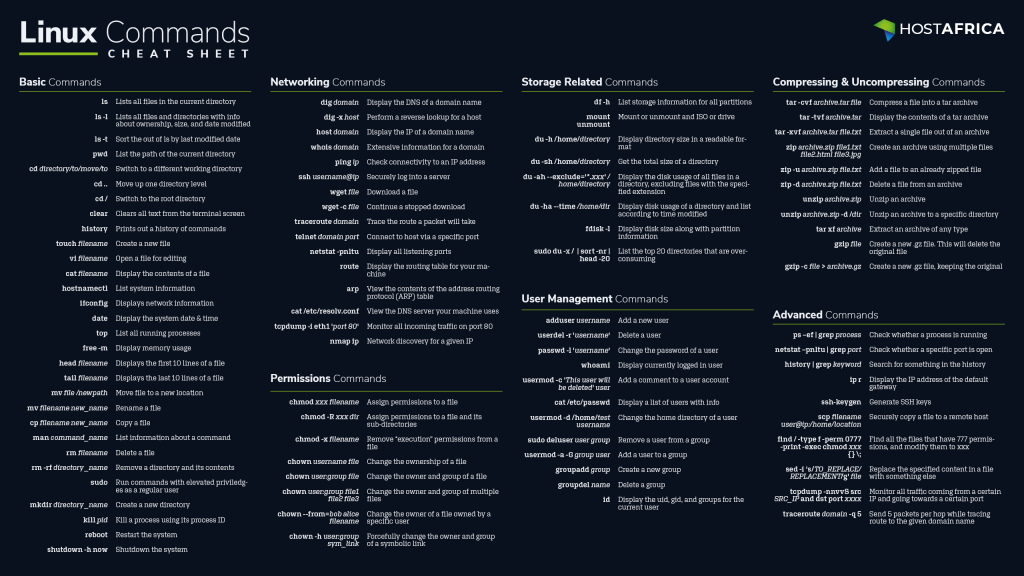OpenCV车牌识别C++:字符识别与车牌组装,解锁车牌识别核心技术
发布时间: 2024-08-06 23:02:24 阅读量: 44 订阅数: 46 


OpenCV实现车牌字符分割(C++)

# 1. OpenCV车牌识别概述**
OpenCV车牌识别是一种利用计算机视觉技术识别车牌号码的应用。它涉及图像处理、字符识别和车牌组装等多个步骤。OpenCV是一个开源的计算机视觉库,提供了丰富的图像处理和机器学习算法,为车牌识别提供了强大的技术支持。
车牌识别在智能交通、安防监控等领域有着广泛的应用。它可以实现车辆识别、交通违章检测、停车场管理等功能,为交通管理和城市安全提供有力保障。
# 2. 字符识别基础
字符识别是车牌识别系统中至关重要的环节,其准确性直接影响车牌识别的整体性能。本节将深入探讨字符识别基础,包括字符分割与预处理、特征提取与分类等关键技术。
### 2.1 字符分割与预处理
字符分割与预处理是字符识别的前期准备工作,其目的是将车牌图像中的字符分割出来并进行必要的处理,为后续特征提取和分类做好基础。
#### 2.1.1 图像二值化与形态学处理
图像二值化是将图像中的像素值转换为0或255,从而得到一幅黑白图像。对于车牌图像,二值化可以有效去除背景噪声,突出字符信息。常用的二值化方法包括阈值分割、自适应阈值分割和Otsu阈值分割。
```python
import cv2
# 读取车牌图像
image = cv2.imread('car_plate.jpg')
# 灰度化
gray = cv2.cvtColor(image, cv2.COLOR_BGR2GRAY)
# 二值化
thresh = cv2.threshold(gray, 127, 255, cv2.THRESH_BINARY)[1]
```
形态学处理是一组图像处理技术,用于对图像中的形状进行操作。在字符分割中,形态学处理可以用来去除噪声、填充空洞和连接断开的字符。常用的形态学操作包括腐蚀、膨胀和开运算。
```python
# 腐蚀
kernel = cv2.getStructuringElement(cv2.MORPH_RECT, (3, 3))
eroded = cv2.erode(thresh, kernel)
# 膨胀
dilated = cv2.dilate(eroded, kernel)
# 开运算
opened = cv2.morphologyEx(dilated, cv2.MORPH_OPEN, kernel)
```
#### 2.1.2 字符分割算法
字符分割算法将二值化的车牌图像分割成单个字符图像。常用的字符分割算法包括投影法、连通域法和轮廓法。
投影法通过计算图像水平和垂直方向上的像素投影,找到字符之间的分割线。连通域法将图像中的连通像素集合识别为字符。轮廓法通过检测图像中的闭合轮廓来分割字符。
```python
# 投影法
horiz_proj = np.sum(opened, axis=0)
vert_proj = np.sum(opened, axis=1)
# 寻找分割线
horiz_lines = np.where(horiz_proj < np.max(horiz_proj) / 2)[0]
vert_lines = np.where(vert_proj < np.max(vert_proj) / 2)[0]
# 分割字符
chars = []
for i in range(len(horiz_lines) - 1):
for j in range(len(vert_lines) - 1):
char = opened[horiz_lines[i]:horiz_lines[i+1], vert_lines[j]:vert_lines[j+1]]
chars.append(char)
```
### 2.2 特征提取与分类
特征提取与分类是字符识别的核心步骤。特征提取从字符图像中提取出具有判别性的特征,分类算法利用这些特征对字符进行分类。
#### 2.2.1 特征提取方法
常用的特征提取方法包括:
- **直方图特征:**计算字符图像中像素灰度值的直方图,作为特征。
- **Hu矩特征:**计算字符图像的7个Hu矩,作为特征。
- **Zernike矩特征:**计算字符图像的Zernike矩,作为特征。
```python
# 直方图特征
hist = cv2.calcHist([char], [0], None, [256], [0, 256])
# Hu矩特征
moments = cv2.HuMoments(cv2.moments(char)).flatten()
# Zernike矩特征
zernike = cv2.ZernikeMoments(char, 10, 0)
```
#### 2.2.2 分类算法选择
常用的分类算法包括:
- **支持向量机(SVM):**一种二分类算法,通过找到最佳超平面将数据点分类。
- **k近邻(kNN):**一种简单有效的分类算法,将新数据点分类为与它最相似的k个数据点所属的类别。
- **神经网络:**一种强大的分类算法,通过训练多层神经网络来学习数据中的模式。
```python
# SVM分类器
clf = svm.SVC()
clf.fit(features, labels)
# kNN分类器
clf = KNeighborsClassifier(n_neighbors=5)
clf.fit(features, labels)
# 神经网络分类器
model = tf.keras.models.Sequential([
tf.keras.layers.Dense(128, activation='relu'),
tf.keras.layers.Dense(64, activation='relu'),
tf.keras.layers.Dense(10, activation='softmax')
])
model.compile(optimizer='adam', loss='sparse_categorical_crossentropy', metrics=['accuracy'])
model.fit(features, labels, epochs=10)
```
# 3. 车牌组装原理
### 3.1 车牌定位与矫正
#### 3.1.1 车牌定位算法
**滑动窗口法**
- 将图像划分为重叠的窗口,每个窗口包含一个潜在的车牌区域。
- 对每个窗口进行特征提取和分类,判断是否包含车牌。
- 找到包含车牌的窗口,即为车牌定位结果。
**霍夫变换**
- 检测图像中直线和圆形等几何形状。
- 通过霍夫变换检测车牌中的水平和垂直线,从而定位车牌区域。
#### 3.1.2 车牌矫正算法
**仿射变换**
- 通过四个角点匹配,将车牌图像变换为矩形。
- 仿射变换矩阵:
```
[[a, b, c],
[d, e, f],
[0, 0, 1]]
```
- 参数说明:
- (a, b, c) 对应水平平移、垂直平移和旋转
- (d, e, f) 对应缩放和剪切
**透视变换**
- 将车牌图像变换为鸟瞰图。
- 透视变换矩阵:
```
[[a, b, c, d],
[e, f, g, h],
[i, j, k, l],
[0, 0, 0, 1]]
```
- 参数说明:
- (a, b, c, d) 对应水平平移、垂直平移、旋转和缩放
- (e, f, g, h) 对应透视变换参数
- (i, j, k, l) 对应剪切参数
### 3.2 字符匹配与组装
#### 3.2.1 字符匹配算法
**模板匹配**
- 将字符模板与车牌图像中的候选字符区域进行匹配。
- 使用相关系数、欧氏距离等相似度度量进行比较。
**特征匹配**
- 提取字符的特征,如轮廓、霍夫描述符等。
- 使用特征匹配算法,如最近邻、K-近邻等,找到最相似的字符。
#### 3.2.2 车牌组装规则
**字符顺序规则**
- 车牌字符通常按固定顺序排列,如省份代码、字母代码、数字代码。
- 根据车牌类型和地区,制定相应的字符顺序规则。
**字符间距规则**
- 车牌字符之间通常有固定的间距。
- 通过统计分析或图像处理技术,确定字符间距的范围。
**字符大小规则**
- 车牌字符通常具有相似的尺寸和字体。
- 设定字符大小的容差范围,以避免错误组装。
**字符颜色规则**
- 车牌字符通常为特定颜色,如黑色或白色。
- 通过图像处理技术,提取字符区域的颜色信息,进行颜色匹配。
# 4.1 字符识别实现
### 4.1.1 字符分割与预处理
#### 图像二值化与形态学处理
图像二值化是将灰度图像转换为二值图像,通常使用 Otsu 阈值法。形态学处理是通过形态学算子(如腐蚀、膨胀)对图像进行处理,以去除噪声和增强目标特征。
```python
import cv2
# 图像读取
image = cv2.imread('car_plate.jpg')
# 图像灰度化
gray = cv2.cvtColor(image, cv2.COLOR_BGR2GRAY)
# 图像二值化
thresh = cv2.threshold(gray, 0, 255, cv2.THRESH_BINARY_INV + cv2.THRESH_OTSU)[1]
# 形态学处理:腐蚀
kernel = cv2.getStructuringElement(cv2.MORPH_RECT, (3, 3))
eroded = cv2.erode(thresh, kernel, iterations=1)
# 形态学处理:膨胀
dilated = cv2.dilate(eroded, kernel, iterations=1)
```
**参数说明:**
* `cv2.threshold`:二值化函数,`0` 为阈值,`255` 为最大值,`cv2.THRESH_BINARY_INV + cv2.THRESH_OTSU` 为阈值方法
* `cv2.getStructuringElement`:获取形态学算子,`cv2.MORPH_RECT` 为矩形算子,`(3, 3)` 为算子大小
* `cv2.erode`:腐蚀操作,`iterations` 为腐蚀次数
* `cv2.dilate`:膨胀操作,`iterations` 为膨胀次数
**逻辑分析:**
1. 灰度化图像,去除颜色信息。
2. 二值化图像,将灰度值大于阈值的像素设为白色,否则设为黑色。
3. 腐蚀操作,去除噪声。
4. 膨胀操作,增强字符特征。
#### 字符分割算法
字符分割算法将二值图像中的字符分离出来。常用算法包括:
* **投影法:**计算图像每一列或行的像素和,根据像素和的分布将字符分割出来。
* **连通域分析:**将相邻的白色像素连接成连通域,每个连通域对应一个字符。
```python
import cv2
# 垂直投影
vertical_projection = cv2.reduce(dilated, 0, cv2.REDUCE_SUM)
# 水平投影
horizontal_projection = cv2.reduce(dilated, 1, cv2.REDUCE_SUM)
# 寻找投影峰值
vertical_peaks = np.where(vertical_projection > np.mean(vertical_projection))[0]
horizontal_peaks = np.where(horizontal_projection > np.mean(horizontal_projection))[0]
# 字符分割
characters = []
for i in range(len(vertical_peaks) - 1):
for j in range(len(horizontal_peaks) - 1):
character = dilated[vertical_peaks[i]:vertical_peaks[i+1], horizontal_peaks[j]:horizontal_peaks[j+1]]
characters.append(character)
```
**参数说明:**
* `cv2.reduce`:投影函数,`0` 为垂直投影,`1` 为水平投影,`cv2.REDUCE_SUM` 为投影方法
* `np.where`:寻找投影峰值
* `np.mean`:计算投影均值
**逻辑分析:**
1. 计算图像的垂直投影和水平投影。
2. 寻找投影峰值,峰值对应字符的边界。
3. 根据投影峰值分割字符。
### 4.1.2 特征提取与分类
#### 特征提取方法
特征提取方法将字符图像转换为一组特征向量。常用方法包括:
* **直方图:**计算字符图像的灰度直方图。
* **Hu 矩:**计算字符图像的 Hu 矩,它是一种不随图像平移、旋转和缩放而变化的特征。
```python
import cv2
import numpy as np
# 特征提取:直方图
def histogram_features(image):
hist = cv2.calcHist([image], [0], None, [256], [0, 256])
return hist.flatten()
# 特征提取:Hu 矩
def hu_moments_features(image):
moments = cv2.HuMoments(cv2.moments(image)).flatten()
return moments
```
**参数说明:**
* `cv2.calcHist`:计算直方图函数,`[image]` 为输入图像,`[0]` 为通道索引,`[256]` 为直方图大小
* `cv2.HuMoments`:计算 Hu 矩函数
**逻辑分析:**
1. 直方图特征:计算字符图像的灰度直方图,并将其展平为一维特征向量。
2. Hu 矩特征:计算字符图像的 Hu 矩,并将其展平为一维特征向量。
#### 分类算法选择
分类算法将特征向量映射到字符类别。常用算法包括:
* **支持向量机 (SVM):**一种二分类算法,通过找到最佳超平面将特征向量分隔成不同的类别。
* **决策树:**一种基于树形结构的分类算法,通过一系列决策规则将特征向量分配到不同的类别。
```python
from sklearn.svm import SVC
from sklearn.tree import DecisionTreeClassifier
# 分类算法:SVM
clf_svm = SVC()
# 分类算法:决策树
clf_dt = DecisionTreeClassifier()
```
**参数说明:**
* `SVC`:支持向量机分类器
* `DecisionTreeClassifier`:决策树分类器
**逻辑分析:**
1. SVM 分类器:使用支持向量机算法对特征向量进行分类。
2. 决策树分类器:使用决策树算法对特征向量进行分类。
# 5.1 车牌识别系统部署
### 5.1.1 系统架构设计
车牌识别系统部署需要考虑以下关键组件:
- **图像采集模块:**负责采集车牌图像,可采用摄像头或其他图像采集设备。
- **图像处理模块:**负责对采集到的图像进行预处理、字符分割、特征提取等操作。
- **字符识别模块:**负责识别分割后的字符,可采用深度学习或传统机器学习算法。
- **车牌组装模块:**负责将识别出的字符组装成完整的车牌号。
- **数据库模块:**负责存储车牌识别结果,可采用关系型数据库或非关系型数据库。
- **用户界面模块:**负责提供用户交互界面,展示识别结果、查询车牌信息等。
### 5.1.2 系统部署与优化
车牌识别系统部署涉及以下步骤:
- **硬件选择:**根据系统性能要求选择合适的服务器、摄像头等硬件设备。
- **软件安装:**安装OpenCV、深度学习框架等软件组件。
- **系统配置:**配置图像采集参数、图像处理算法、字符识别模型等参数。
- **性能优化:**优化图像处理算法、字符识别模型,提高系统处理速度和识别准确率。
- **系统测试:**对系统进行全面测试,验证其功能、性能和稳定性。
- **系统监控:**部署系统监控工具,实时监控系统运行状态,及时发现和解决问题。
0
0





